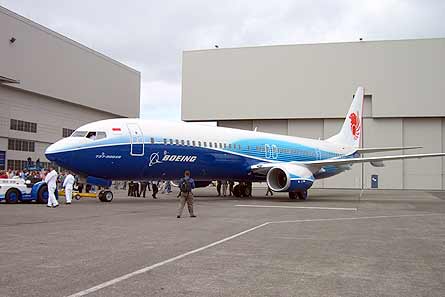The US FAA is taking a "hard look" at the potential for in-flight connectivity to interfere with avionics after certain Honeywell display units proved susceptible to blanking during electro magnetic interference (EPI) testing, says FAA administrator Randy Babbitt.
Speaking to ATI and Flightglobal on the sidelines of the International Society of Transport Aircraft Trading (ISTAT) conference in Scottsdale, Arizona, Babbitt said the FAA is working "with a number of folks in the industry", including the RTCA.
"We want to make sure systems [have] no interference," says Babbitt.
Blanking of Honeywell Phase 3 Display Units (DUs) was observed during required EPI testing when Aircell sought supplemental type certification for its airborne high-speed Internet system on Boeing 737NG aircraft.
| |
|---|---|
While the incident "seems to have been an isolated incident," says Babbitt, questions remain over whether the event occurred "because of bandwidth or only with [this particular] system".
Boeing has deferred the activation of wireless systems that interface with passenger devices that could potentially interfere with the DU 3 displays. The US airframer and Honeywell say the latter is addressing the problem.
However, Boeing is also understood to have begun a broader review to ensure that no other airplane part numbers are susceptible to the same issue.
There are three categories of systems being studied - critical, essential and nonessential required. Boeing is reviewing these systems to ensure they are not susceptible to Wi-Fi or cellular devices, says a source.
Hundreds of systems must be studied. Boeing is understood to be using RTCA DO-307 - which covers Aircraft Design and Certification for Portable Electronic Device (PED) Tolerance - as guidance.
When a manufacturer goes through quality testing in the lab for RTCA DO-307 (as outlined in the FAA's advisory circular AC-20-164), it accounts for both the frequency and energy field value at levels well beyond what a cell phone or Wi-Fi would produce if its near that equipment.
The value covers a range between 100 MHz to 8 GHz. To put that in perspective, Wi-Fi operates at 2.4 GHz or 5 GHz and cell phones operate as low as 460 MHz and as high as 2.17 GHz, so the levels tested to DO-307 far exceed normal scenarios.
"When we evaluate in-flight Wi-Fi systems, two of the areas we consider are interference with avionics systems necessary for continued safe flight and landing, and any vulnerability of airplane systems to intentional or accidental electronic emissions outside FCC standards," says the FAA.
Once equipment passes testing, it is considered to be T-PED (transmission portable electronic device) tolerant, and that's what Boeing and others are working towards.
Aircell and the FAA have declined to discuss specifics involved in certifying the Gogo system.
Babbitt, meanwhile, says: "The results of testing will decide if we need to address [further] parameters."
Source: Air Transport Intelligence news
























